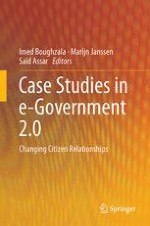2015 | OriginalPaper | Chapter
9. Twitter and 2013 Pakistan General Election: The Case of David 2.0 Against Goliaths
Authors : Saifuddin Ahmed, Marko Skoric
Published in: Case Studies in e-Government 2.0
Publisher: Springer International Publishing
Activate our intelligent search to find suitable subject content or patents.
Select sections of text to find matching patents with Artificial Intelligence. powered by
Select sections of text to find additional relevant content using AI-assisted search. powered by
